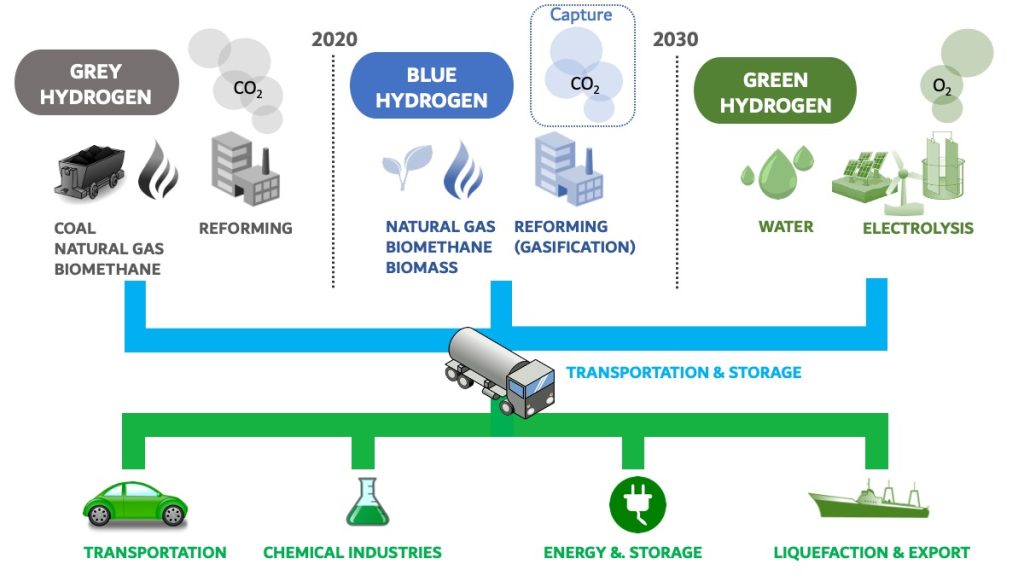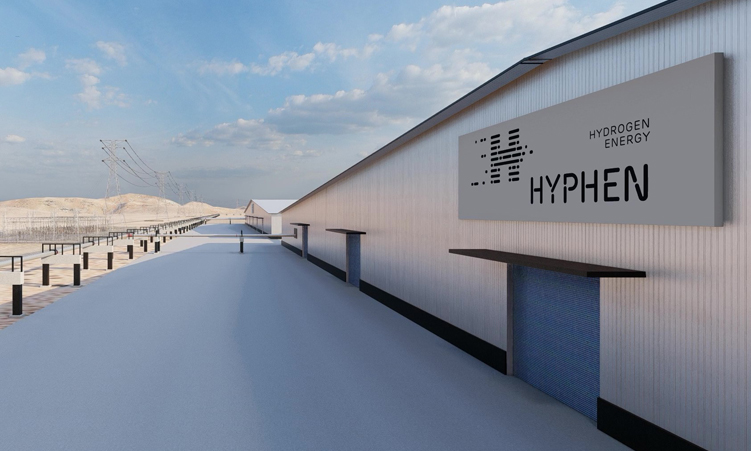Namibia’s potential as a green hydrogen powerhouse presents an exciting frontier for renewable energy.
However, exploring this potential requires a nuanced understanding of how other African countries have managed their energy resources and the socio-economic impacts of these developments.
What is green hydrogen?
Simply put, green hydrogen is hydrogen gas produced via electrolysis from renewable energy sources such as wind, solar, or hydroelectric power.
During this process, water is split into its primary constituents, hydrogen and oxygen, using an electric current.
The process is ‘clean’, since the electricity used is generated from renewable sources.
It releases trace amounts of carbon and is therefore referred to as ‘green’.
Quite a number of hydrogen productions exist on the market, which include although not limited to the following:
Blue hydrogen: This combines natural gas and steam to create hydrogen, with carbon dioxide as a by-product. The process includes carbon capture and storage (CCS) to trap and store the CO2. Although blue hydrogen is considered ‘low carbon’ because of CCS, the steam reforming process itself still generates greenhouse gases.
Grey hydrogen: This is currently the most prevalent type of hydrogen produced from natural gas using steam methane reforming, which does not capture the greenhouse gases produced. It is substantially the same as blue hydrogen, but without carbon capture and storage.
Black and brown hydrogen: Both methods involve the gasification of coal. These processes do not typically include CCS, leading to substantial greenhouse gas emissions and environmental harm.
So, let’s think of green hydrogen as the ‘champagne’ of energy: It’s expensive and for special occasions only (well, at least currently).
Despite its environmental benefits, green hydrogen accounts for a small fraction of the market today, but is expected to grow in the future as technology advances and infrastructure upgrades make it more economically viable.

Why the global interest? What’s at stake?
Green hydrogen is highly capital intensive and currently more expensive than its fossil counterpart, making it highly sensitive to financing conditions and policy support. Namibia has the capacity to be a forerunner of what will revolutionise the energy sector through the reduction of carbon emissions in challenging sectors like heavy duty transportation and industrial operations, where electrification is neither feasible nor cost effective.
However, the question remains: Can we completely do away with the use of fossil fuels and rely solely on green hydrogen?
Saying yes would be idealistic.
The answer is no, at least for now.
Just as champagne doesn’t replace all the drinks on the market, green hydrogen is not yet poised to replace all energy sources.
There is considerable pressure from various parts of the world for nations like Namibia to adopt decarbonisation agendas, but this raises critical questions about the cost and who stands to benefit the most. While the environmental benefits are clear, the economic and infrastructural burdens may fall disproportionately on developing nations, necessitating a careful and equitable approach to transitioning to green energy.
A phased approach, integrating green hydrogen with other renewable energy solutions and gradually reducing dependence on fossil fuels, is likely to be the most practical path forward.
Policymakers, industry stakeholders, and the scientific community must work together to create the necessary conditions for a successful transition.
According to the Namibia Investment Promotion and Development Board (NIPDB), Namibia has a renewable energy production capacity of over 250GW, making it a globally competitive low-cost green hydrogen producer and exporter at US$1,50/kg.
This advantage positions the Southern Development Corridor Initiative (SDCI) as a prime location for green hydrogen exports, expected to reach 10 to 15 Mt/pa worth US$35 billion.
Namibia’s potential to produce cost-effective green hydrogen can boost local and regional energy supply and contribute significantly to global decarbonisation efforts.
The cost of electricity and electrolysis are critical factors in green hydrogen production, with prices expected to decline as production costs decrease.
Namibia is constructing its first large-scale green hydrogen plant, a US$9,4 billion (N$174 billion) project that is sat to create permanent 3 000 jobs and 15 000 construction jobs over four years.
Ongoing projects
Major projects like the Hyphen Hydrogen Energy Project, aiming to build sub-Saharan Africa’s largest green hydrogen facility, and the Dâures Green Hydrogen Village, a pilot project focusing on sustainability and local community involvement.
Additional initiatives from companies like Cleanergy Solutions and Hylron further underline Namibia’s growing role in this sector.
In a recent interview, James Mnyupe, the presidential economic adviser and green hydrogen commissioner, outlined the necessity for Namibia to seize opportunities presented by the emerging industry.
“It’s atypical for great endeavours to not go through test and trial periods, but it’s through those failures that we get the chance to learn and ultimately diversify our economic palate. Risk is everywhere, but we can’t sit by and have others write history for us,” he said.
Stay informed with The Namibian – your source for credible journalism. Get in-depth reporting and opinions for
only N$85 a month. Invest in journalism, invest in democracy –
Subscribe Now!










